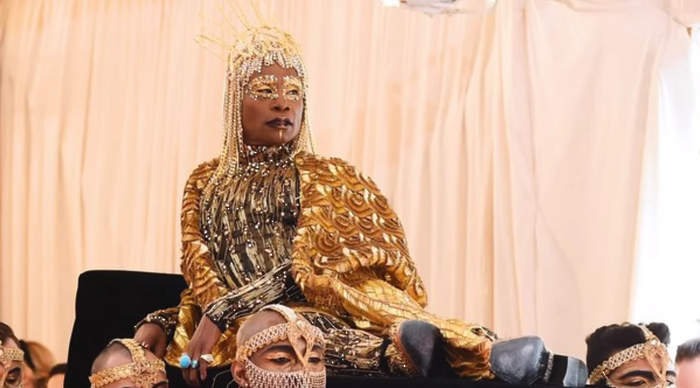Met Gala 2020: Zeitgeist and the nature of history
With the announcement of the theme for the 2020 Met Gala, Esmee Wright reviews how the theme questions the past, present and future of couture
The Met Gala theme has just been announced: “About Time: Fashion and Duration”. Officially, the Met Gala is a celebration of the opening of the Costume Institute’s annual fashion exhibition, as well as a fundraiser for the Institute. The theme is appropriate, given that this event marks the 150th anniversary of the Met.
With a thirty-three thousand strong collection of objects spanning fashion history, the Costume Institute is integral in shaping what is remembered in the “fashion canon”. With curator Andrew Bolton’s “nuanced and open-ended approach”, a necessary spotlight will (hopefully) be shone on the fact that in fashion, as elsewhere, developments throughout history are rarely as linear as they are presented in museum exhibitions and magazine roundups.
Bolton himself says that in the process of creating the show he was confronted by the “biases and prejudices of previous curators” around what deserved to be included in this most prestigious of collections. His vision for the exhibition, while disappointingly Western-centric in terms of designers, is certainly more experimental than previous exhibitions. In reforming their approach, he intends to demonstrate the creative evolution of fashion trends; comparing, for instance, the elongation of form of an 1870s princess line dress to Alexander McQueen's infamous '90s “bumsters”.
This more adventurous layout, Bolton says, is inspired in part by the work of French philosopher Henri Bergson. Few publications have attempted to grapple with his writing thus far, and it would be surprising - not to mention downright impressive - to see any of the guests attempt to express his concepts in their outfit choice. Bergson wrote on the nature of duration, its differentiation from space, and the resulting lack of juxtaposition of events, denial of causality and the existence of free will - hardly easy concepts to marry with haute couture.
I admit, despite my degree in French and current proximity to the Sorbonne, I had to google his work, and I very much doubt I understood it correctly. Susan Sontag’s Notes on “Camp” suddenly looks incredibly accessible to the casual reader.
The second, infinitely more recognisable influence for this theme is the works of Virginia Woolf (the “ghost narrator” of the exhibition). More specifically, Bolton’s inspiration comes from Sally Potter's 1992 film adaptation of Orlando, and most specifically, the scene in which Tilda Swinton runs through a maze in the voluminous dress of an 18th century woman and emerges dressed in the only slightly less cumbersome 19th century equivalent.
This does perhaps present the more “heterogeneous” understanding of fashion that Bolton is searching for, but the film and novel are notable more to me for its clear link to a more queer reading, given the gender fluidity of the central character and Woolf’s own sexual fluidity. It could be considered something of a continuation of last year’s queer “Camp” theme, and, I would argue, reveals the other important aspect of the Met Gala and the Costume Institute’s exhibition. While both institutions function as museums and thus by definition look to the past, Bolton also acknowledges their power to shape the popular narrative around what that past is, and thus what the future will be.
In continuing to make reference to queer figures, the Met is working on acknowledging the often overlooked contributions of the LGBTQ+ community on all levels of fashion, be it in the form of high profile gay designers or the traditionally 'underground' world of ball culture.
The idea of duration does necessarily bring with it, as the exhibition overview mentions in a brief final paragraph, the necessity of considering the future of fashion. Here, sustainability and longevity are bound together; the whole exhibition is, after all, a re-vindication of the apparent ephemerality of trends in the fashion world.
In addition to that, however, I sincerely hope that those attending the Met Gala will take this opportunity, not just to make the rather obvious references back to fashion history, but also explore the possibilities of its future, particularly in view of the timely trend towards more eco-conscious modes of creation which we are seeing in across the world of high fashion. A more responsible approach to the impending ecological crisis cannot be allowed to be one of the trends that fashion tries out and slinks away from, like a more apocalyptic leg warmer.
 News / Downing investigates ‘mysterious’ underground burial vault 29 December 2025
News / Downing investigates ‘mysterious’ underground burial vault 29 December 2025 News / Unions protest handling of redundancies at Epidemiology Unit30 December 2025
News / Unions protest handling of redundancies at Epidemiology Unit30 December 2025 Lifestyle / Ask Auntie Alice29 December 2025
Lifestyle / Ask Auntie Alice29 December 2025 Features / ‘Treated like we’re incompetent’: ents officers on college micromanagement30 December 2025
Features / ‘Treated like we’re incompetent’: ents officers on college micromanagement30 December 2025 Science / Astronomical events to look out for over the break29 December 2025
Science / Astronomical events to look out for over the break29 December 2025










